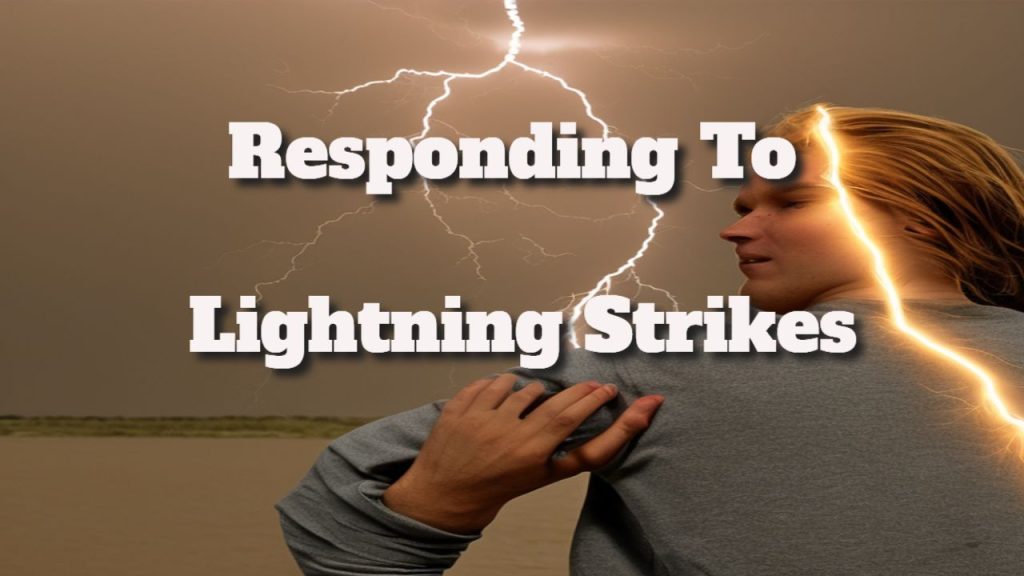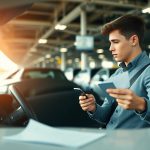Maximize Your Protection Against Lightning: Proven Techniques to Stay Safe from Strikes
Deciphering Lightning: Exploring Its Nature and the Risks Involved
lightning is a fascinating yet perilous natural phenomenon that captures the attention of many due to its formidable power and striking visual appeal. However, it represents a significant hazard that demands our awareness and understanding to ensure personal safety. By delving into the intricacies of lightning, we can establish a solid groundwork for executing effective safety strategies, which will be elaborated on in upcoming sections to enhance our preparedness.
Essentially, lightning is an abrupt electrical discharge occurring during thunderstorms, resulting from the accumulation and release of static electricity in the atmosphere. This natural occurrence can manifest in various forms and intensities, each with its own set of characteristics and potential dangers.
Inside thunderclouds, the collision of water droplets with ice particles leads to an important separation of electric charges: positively charged particles ascend to the cloud’s upper regions, while negatively charged particles congregate at the base. This charge imbalance is what sets the stage for the awe-inspiring yet often perilous lightning storms.
Lightning can appear in different variations, each exhibiting distinct features. The most common type is referred to as cloud-to-ground lightning, which descends from the lower part of a thundercloud directly to the earth.
This specific lightning type is infamous for its capacity to cause significant destruction, striking with remarkable speed and intensity. In contrast, cloud-to-cloud lightning occurs between separate areas within the same storm cloud.
Cloud-to-cloud lightning often produces dazzling flashes that light up the night sky, creating a captivating visual display that mesmerizes those fortunate enough to witness it.
While the stunning spectacle of lightning can be captivating, it is crucial to recognize the inherent dangers it poses to individuals and communities.
Lightning strikes can result in severe injuries or even fatalities, with thousands of lives tragically lost each year due to this potent natural threat.
It is essential to acknowledge that lightning can strike even when a storm appears to be distant, as the electrical charge can travel considerable distances. Understanding the inherent risks associated with lightning is imperative for improving our overall safety.
Armed with this knowledge, we can grasp the urgent necessity for proactive safety measures. By enhancing our comprehension of lightning’s complexities, we can equip ourselves with effective strategies to mitigate the associated risks.
To delve deeper into the generation of lightning, we must examine the various elements that contribute to its occurrence. Thunderstorms are the primary catalysts for lightning, offering the essential components of moisture, unstable air, and updrafts.
When these elements converge, they create optimal conditions for spectacular electrical discharges. Thunderstorms frequently arise in warm, humid environments where warm air ascends and interacts with cooler air masses.
The interplay between these differing air masses generates the favorable conditions necessary for the development of thunderclouds, which are critical for lightning production.
The dynamics of air movement within a thundercloud are vital. Updrafts collide, prompting tiny ice particles and water droplets to interact, resulting in a charge separation that initiates a complex series of events leading to lightning.
As positive and negative charges accumulate, a powerful electric field forms within the cloud. Ultimately, when this electric field reaches a critical level, a discharge occurs, leading to a lightning strike.
The ability of lightning to illuminate the intricate nature of our environment is truly remarkable. The various hues of lightning can indicate the composition of storm clouds.
For example, blue or purple lightning often signifies the presence of ice particles, while yellow or red lightning may indicate dust or pollution within the cloud. By studying these characteristics, meteorologists gain invaluable insights into the atmospheric conditions conducive to lightning formation.
Although the breathtaking beauty of lightning captivates many, it is essential to remain vigilant about the associated hazards of this powerful natural phenomenon. Lightning strikes occur at incredible speeds, and their destructive potential should never be underestimated.
In the sections to follow, we will examine various safety strategies that are crucial for protecting ourselves in the event of a lightning strike.
By arming ourselves with knowledge and implementing preventative measures, we can significantly reduce the risks and safeguard ourselves from the dangers of lightning strikes. Let’s embark on this enlightening journey together to uncover the secrets of lightning safety.
Proven Safety Measures to Reduce the Risk of Lightning Strikes
When lightning strikes, it poses an omnipresent threat, as this powerful natural phenomenon can occur suddenly and without prior warning.
Establishing robust safety protocols and protective measures is paramount to ensure your safety during a lightning event. By doing so, we can significantly diminish the risk of being struck while safeguarding ourselves and those around us.
The foremost precaution during an impending thunderstorm is to remain indoors. This action offers the highest level of protection against potential lightning strikes. Ensure that you seek shelter in a sturdy building, particularly one equipped with a well-designed lightning protection system.
Avoid seeking refuge in open garages, picnic shelters, or any other structures that lack adequate protection. While indoors during a thunderstorm, maintain a safe distance from windows, doors, and electrical devices to further reduce risk.
If finding indoor shelter is not feasible, seek appropriate temporary refuge. Stay away from isolated trees, wide-open fields, or large metal structures, as these can effectively serve as lightning rods.
To minimize the risk of a direct strike, locate a low-lying area away from potential lightning rods, and lie flat with your hands over your ears to protect against the thunder.
Additionally, being aware of lightning safety protocols during various outdoor activities is crucial. Always check weather forecasts prior to engaging in outdoor activities such as hiking, golfing, or swimming, as conditions can change rapidly.
By seeking shelter or avoiding outdoor activities during storms, you can drastically decrease your risk of being struck by lightning.
It is vital to remember that minimizing your chances of being struck by lightning is essential for your safety. By staying indoors, finding proper shelter, and comprehending lightning safety recommendations, we can effectively protect ourselves and those around us.
However, safety measures extend beyond these basic actions. By proactively engaging in additional steps, individuals can further lower their risk of lightning strikes and ensure their safety during thunderstorms.
Avoiding contact with water during rainstorms is a critical safety measure. Being in or near water significantly increases the risk of lightning strikes, as water is an excellent conductor of electricity.
If you are participating in activities such as swimming or boating, exit the water immediately upon hearing thunder or seeing lightning. Remain indoors or inside a fully enclosed vehicle until the storm has passed, as this is the safest course of action.
Moreover, understanding the “30-30 rule” is crucial for safety during thunderstorms.
If there are fewer than 30 seconds between seeing lightning and hearing thunder, seek cover immediately. It is also advisable to remain safe indoors for at least 30 minutes after the last flash of lightning or rumble of thunder to ensure the storm has completely passed.
Creating a comprehensive action plan for outdoor sports and recreational activities is essential. Coaches, organizers, and participants should establish clear guidelines for lightning safety to promote awareness and readiness.
In anticipation of forecasted thunderstorms, it is crucial to halt all activities and relocate everyone to a designated safe area.
To eliminate unnecessary risks, outdoor sporting events, such as golf tournaments or football games, may need to be postponed or rescheduled until conditions are deemed safe.
Educating children, youth, and adults about lightning safety at home and in schools is also a vital component of safety planning.
By raising awareness of lightning dangers and safety practices, individuals can make informed decisions to protect themselves during thunderstorms.
A comprehensive approach that integrates practical safety measures, precautions, and advanced strategies is essential for ensuring safety during thunderstorm events.
By avoiding water during thunderstorms, understanding the 30-30 rule, developing action plans for outdoor activities, and promoting awareness of lightning safety, we can significantly decrease the likelihood of lightning strikes.
Stay vigilant and informed, as your safety and the safety of those around you should always be a top priority in any weather conditions.
Essential First Aid and Response Techniques for Lightning Strike Incidents
Lightning strikes can happen without warning and pose a serious threat to our lives. Understanding the correct response protocols, including first aid techniques, calling for help, and assisting injured individuals, is essential in these critical situations.
First and foremost, personal safety must be prioritized in the event of a lightning strike. If you find yourself outdoors during a thunderstorm, take cover immediately in a safe location.
Avoid wide-open spaces, tall isolated structures, and any bodies of water, as these can act as conductors for lightning. Seek shelter in a sturdy building or a fully enclosed vehicle with closed windows. It is crucial to refrain from sheltering under trees or in temporary structures, as these offer minimal protection against lightning.
Once you have secured suitable shelter, adhere to safety guidelines. Remember that electrical appliances, plumbing fixtures, and telephones can conduct electricity, posing additional risks.
Avoid showering or bathing during a thunderstorm, as water is a highly effective conductor of electricity. Maintain a safe distance from windows, doors, and concrete walls, which lightning can penetrate.
If someone is struck by lightning, swift action is critical. Assess the individual’s breathing and pulse immediately. If either is absent, call 911 and initiate cardiopulmonary resuscitation (CPR) if you are trained.
Starting resuscitation as soon as possible can significantly increase the chances of survival for the victim. If the individual is conscious but injured, provide assistance until medical help arrives.
In the event of a lightning strike, every second counts. Stay calm, act swiftly, and ensure the safety of everyone involved by following the necessary procedures. By understanding these protocols, we can better protect ourselves and those around us from the dangers of lightning strikes.
With this knowledge, we can be better prepared for emergencies that may arise from lightning strikes. We will delve into advanced first aid procedures relevant to these situations and emphasize the importance of being informed and connected during storms.
Be prepared for the unexpected, as emergencies can occur in an instant. Knowledge and readiness are paramount to safeguarding ourselves and others during lightning strikes.
By familiarizing ourselves with advanced first aid techniques and remaining educated on critical response measures, we enhance our ability to respond effectively to lightning strike incidents.
Exercise caution when administering first aid to anyone struck by lightning. Remember that even if there are no visible signs, lightning can cause severe burns and internal injuries, which may not be immediately apparent.
Start by assessing the individual’s airway, breathing, and circulation. If the person is unresponsive or lacks a pulse, call 911 immediately and begin CPR if you are trained to do so.
Initiating resuscitation promptly can dramatically enhance survival rates in such critical situations.
While waiting for medical assistance, focus on anyone who is unconscious but injured. Always keep in mind the four primary goals in these critical situations:
- Stabilize the individual’s condition.
- Maintain appropriate body temperature.
- Minimize the risk of further injuries.
- Ensure the individual receives medical care as soon as possible.
If the person is experiencing difficulty breathing, has burns, or exhibits chest pain, immediate medical attention is crucial.
Discussing the significance of being informed and connected during lightning events is vital. Weather conditions can shift rapidly, making it essential to stay updated about impending severe weather to take preventative actions.
Stay informed about severe weather alerts by regularly checking forecasts, listening to local news, or utilizing weather apps. Maintain communication with family, friends, or colleagues to ensure everyone is aware of safety protocols and can assist if needed.
Understanding advanced first aid techniques and remaining current on lightning safety enables us to respond effectively and protect those at risk during thunderstorms.
Remember, while lightning strikes are unpredictable, we can safeguard ourselves by arming ourselves with knowledge and remaining vigilant. Stay safe, informed, and prepared for the unexpected.
The Article Lightning Strike Protection: Stay Safe During Storms Appeared First On Survival Avenue.
The post Lightning Strike Protection Tips for Storm Safety appeared first on Survival Bite.
The Article Lightning Strike Protection: Essential Tips for Safety During Storms Was Found On https://limitsofstrategy.com




I appreciate your exploration of lightning as both an awe-inspiring phenomenon and a serious safety concern. It’s intriguing how something so visually captivating can also carry such significant risk. I think many people often overlook the dangers of lightning, assuming its impact is limited to dramatic visuals and the occasional power outage. However, it’s vital to understand its complexity, especially when considering how to best protect ourselves during thunderstorms.
You’re spot on about the dual nature of lightning; it truly is a marvel of nature that can evoke both wonder and fear. I’ve always found it fascinating to watch storms roll in, but I approach them with a healthy respect. Growing up, my dad used to tell stories about people he knew who had had close calls with lightning, which definitely heightened my awareness.
It’s interesting how our experiences while traveling can sometimes mirror the dual nature of phenomena like lightning; much like navigating safety during storms, knowing the ins and outs of renting a car abroad can help you avoid unexpected pitfalls and enhance your adventure.
‘Rent a Car Abroad: Key Tips for International Travelers’
https://ishevents.org/rent-a-car-abroad-key-tips-for-international-travelers/.
Your exploration of the complexities of lightning and the inherent risks it poses is incredibly relevant, especially as our understanding of natural phenomena continues to grow. Having spent several years studying meteorology, I have developed a deep appreciation for both the beauty and the danger of thunderstorms. The awe-inspiring sight of forks of lightning illuminating the night sky can easily overshadow the dangers they bring, which is why it’s vital to highlight effective safety techniques as you plan to do.
I really appreciate how you opened up the discussion about lightning—it’s one of those natural wonders that we often take for granted, considering how visually stunning they can be and yet remaining largely unaware of their dangers. I remember a few summers ago, I was at a friend’s cabin when a thunderstorm rolled in. The sky was electrified with those flashes, and I was initially drawn to watch them until my friend reminded me how dangerous it could be, especially being near tall trees and open fields.